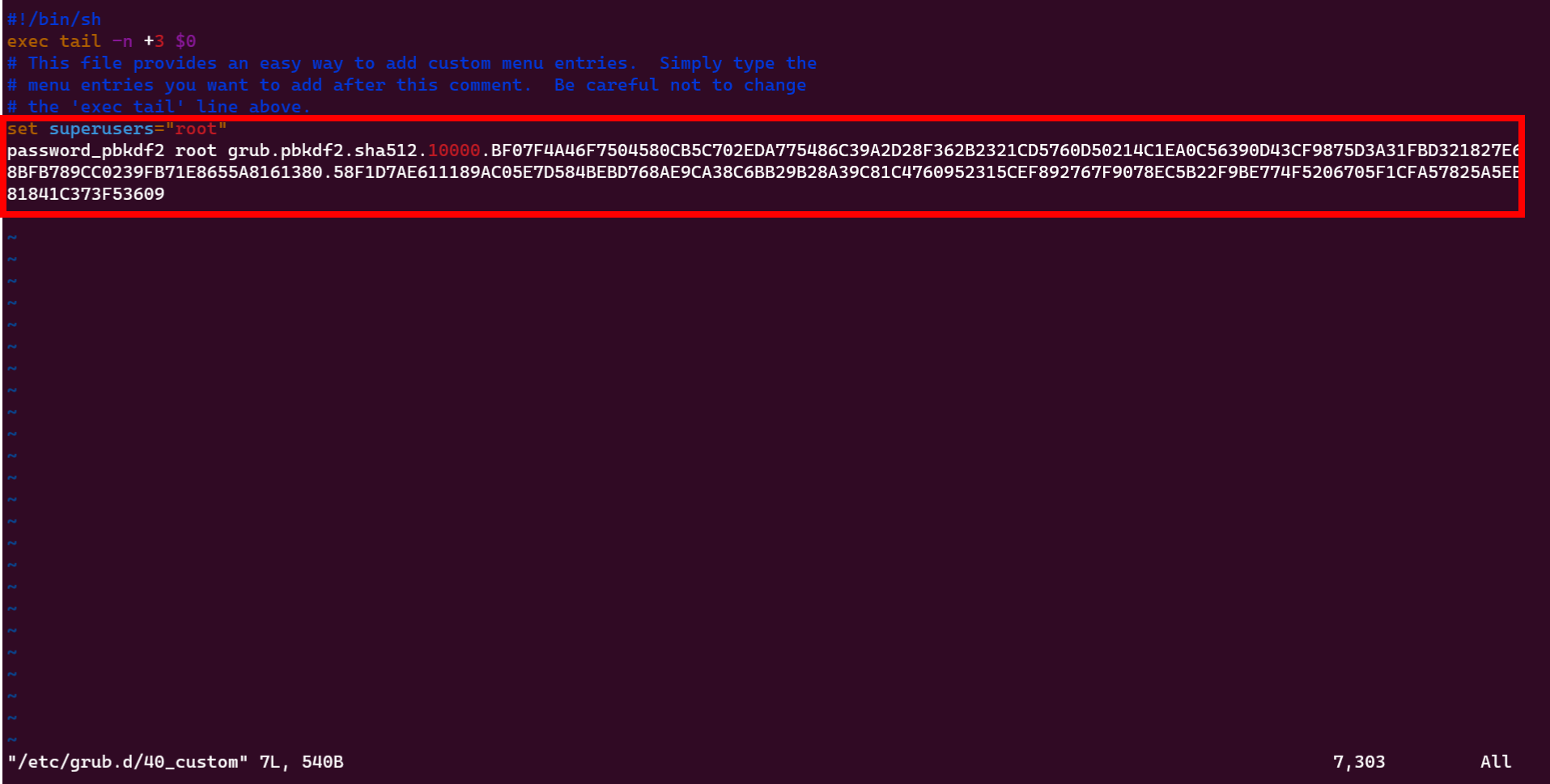Securing the Boot Loader (GRUB)
This section demonstrates how to secure the boot loader. When a computer boots up, the BIOS executes the first code, which performs a Power-On Self-Test before executing the code in the Master Boot Record sector of the disk where the boot loader is located. The boot loader then loads the kernel, which initializes the entire system.
GRUB 2 is the default boot loader for major Linux distributions, and a hacker could exploit it to boot the system into Single User Mode or change its configuration. To prevent such security threats, it's essential to protect the GRUB bootloader password. Note that physical access to the computer can bypass GRUB's security measures.
Another potential security vulnerability is booting the system from another medium, such as a USB stick. To address this, set up a BIOS password and configure the system to boot automatically from the partition on which Linux is installed.
It's worth emphasizing that the first layer of security to consider is physical security.
- To require a password for the GRUB boot loader to start the system, it is necessary to generate a hashed password.

- After generating the hashed password, the next step is to add the hash to the GRUB main configuration file by editing it. However, the file is not directly modified by the user It gets overwritten by certain GRUB updates whenever a kernel is added or removed or when the user runs the
update-grub2command. This method ensures that the actual password is not visible in the GRUB scripts, which prevents a possible hacker from accessing it. The GRUB2 main configuration file is located at/boot/grub/grub.cfgTo view the configuration files, use:
Instead, GRUB uses a series of scripts located in /etc/grub.d directory to build the configuration file.

Modify the files in this directory, and then run the update-grub2 command. Based on the contents of these files, update-grub2 will generate the grub.cfg file. Alternatively, you can modify a custom file such as 40_custom, which won't get overwritten even when the GRUB package is updated.
Copy the generated hash password grub.pbkdf2.sha512.10000.BF07F4A46F7504580CB5C702EDA775486C39A2D28F362B2321CD5760D50214C1EA0C56390D43CF9875D3A31FBD321827E68BFB789CC0239FB71E8655A8161380.58F1D7AE611189AC05E7D584BEBD768AE9CA38C6BB29B28A39C81C4760952315CEF892767F9078EC5B22F9BE774F5206705F1CFA57825A5EB81841C373F53609
Add new lines to the 40_custom file the save and exit:
set superusers="root"
password_pbkdf2 root grub.pbkdf2.sha512.10000.BF07F4A46F7504580CB5C702EDA775486C39A2D28F362B2321CD5760D50214C1EA0C56390D43CF9875D3A31FBD321827E68BFB789CC0239FB71E8655A8161380.58F1D7AE611189AC05E7D584BEBD768AE9CA38C6BB29B28A39C81C4760952315CEF892767F9078EC5B22F9BE774F5206705F1CFA57825A5EB81841C373F53609

Update the grub configuration file.

View the content of /boot/grub/grub.cfg
Reboot the Linux system to verify grub is requesting a password to boot into the Linux OS. The username is root, and the password is ********, the same as the one used to generate the GRUB hash. Physical access to the Linux server is required to input the password if a barebone metal is used as the server.